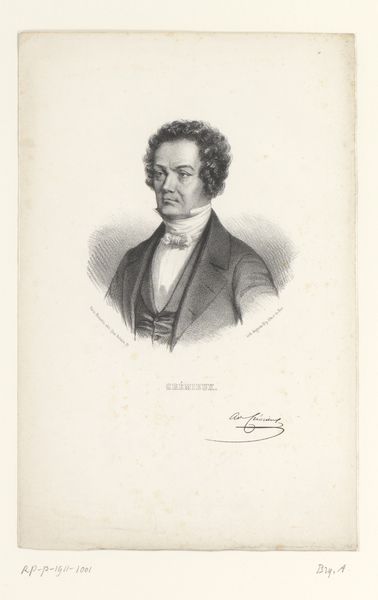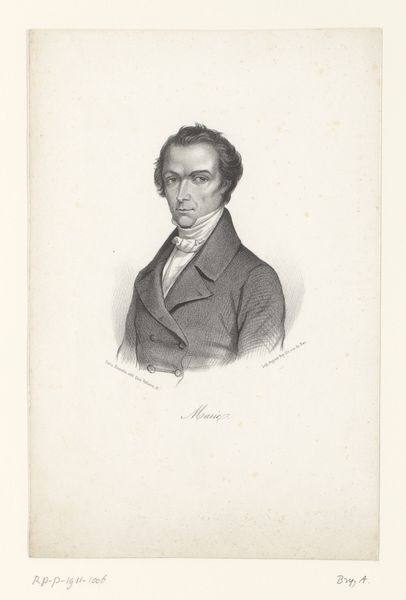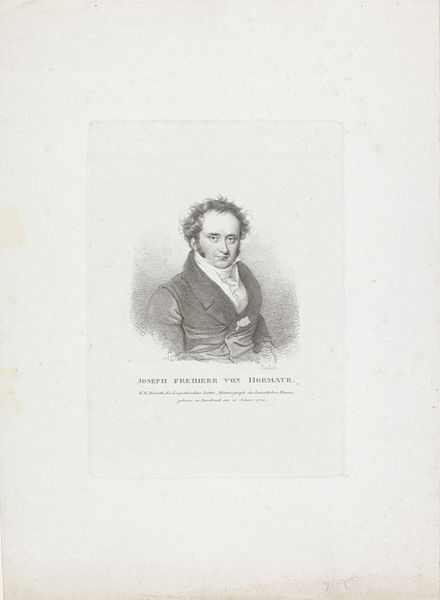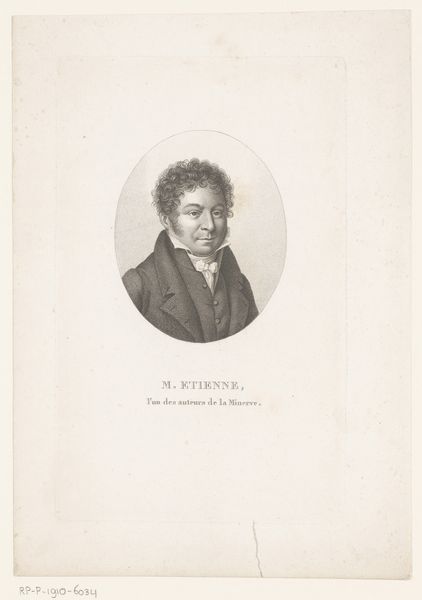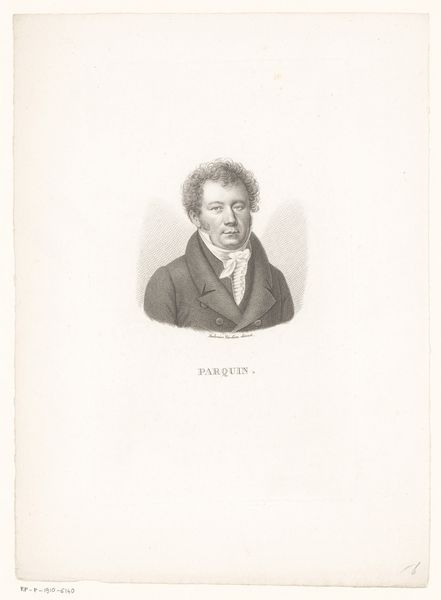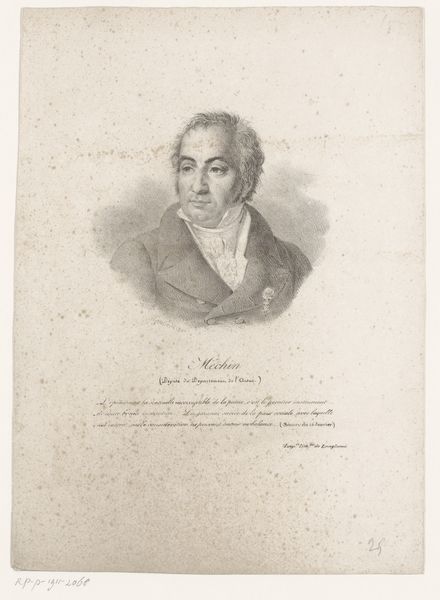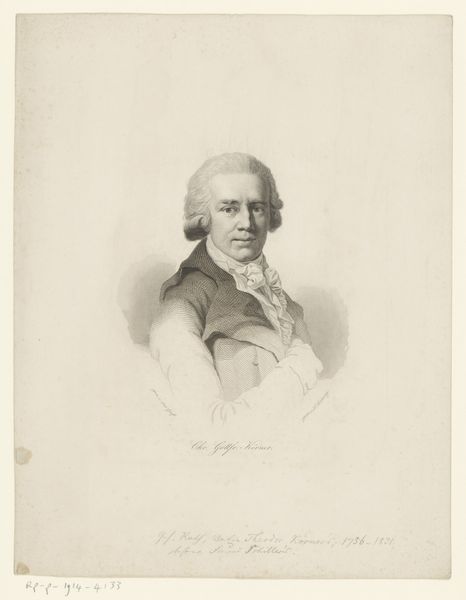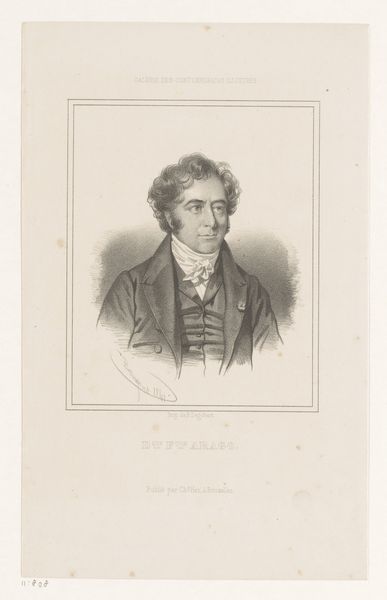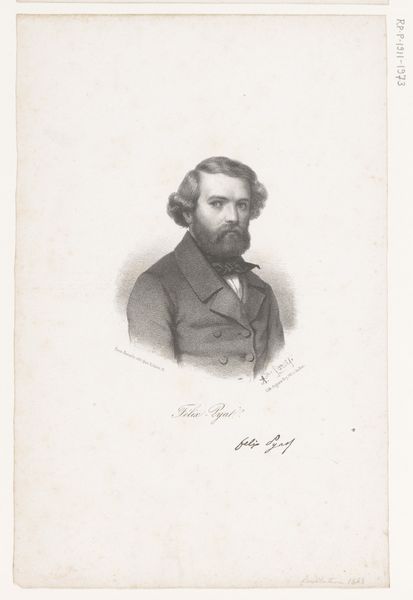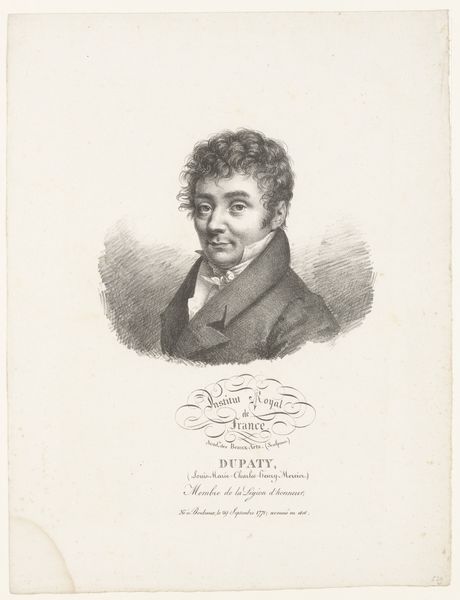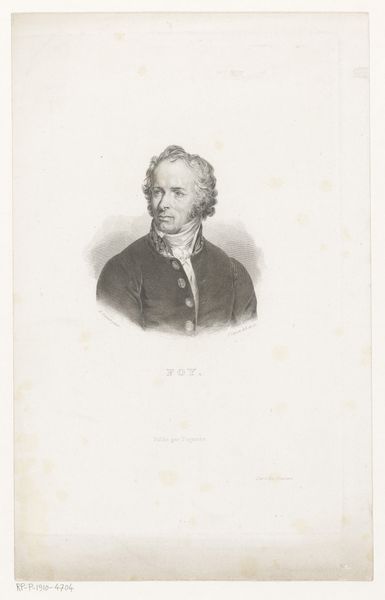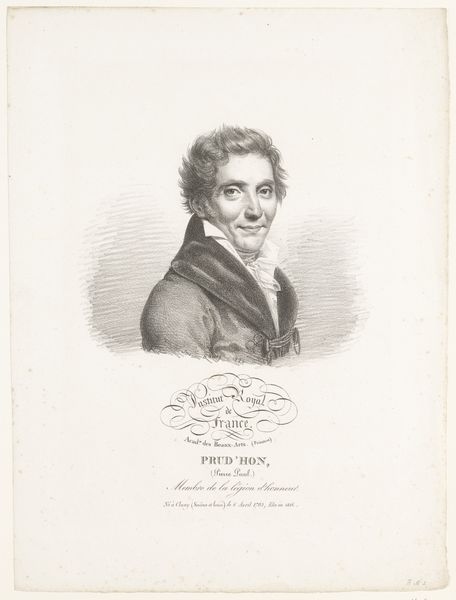
print, paper, pencil, engraving
#
portrait
#
pencil drawn
#
neoclacissism
#
light pencil work
# print
#
pencil sketch
#
old engraving style
#
paper
#
pencil
#
pencil work
#
history-painting
#
engraving
Dimensions: height 295 mm, width 212 mm
Copyright: Rijks Museum: Open Domain
Editor: So, this is a print from 1820, "Portret van Maximilien Sébastien Foy," by François Grenier, done in pencil and engraving. It feels very neoclassical with its focus on the individual and the crisp lines. What catches your eye when you look at it? Curator: The fascinating thing for me is how an image like this actively participates in shaping historical memory. Consider General Foy himself; the star on his coat, the slight upward tilt of his chin...These aren't arbitrary details. What do these elements convey to you? Editor: Dignity, definitely. A sense of accomplishment, maybe? It’s interesting how deliberate these choices seem. Curator: Precisely. Each of these carefully chosen symbols builds a narrative. This wasn't simply a portrait; it was an act of memorialization. Grenier aimed to cement Foy's image within a specific, favorable light within the public's understanding of the Napoleonic era. Consider what visual cues signal valor and leadership. What recurring symbols or archetypes come to mind from other historical portraits? Editor: I guess the way he’s posed is almost like a classical sculpture…that hero look. I never thought about prints having that much of a purpose, but that makes a lot of sense. Curator: It shows you the power of images to embed cultural values, doesn't it? Reflect on the visual language in this print, then think about modern political imagery. Do you notice similar techniques used to evoke particular responses? Editor: Wow, that’s so true! Thinking about symbols this way really opens up how to interpret images. It’s been enlightening to really look at a piece beyond just what it depicts, but also its active meaning. Curator: Indeed! Seeing art as an active agent, not a passive reflection, changes everything. It prompts us to constantly question the underlying intentions and cultural forces at play.
Comments
No comments
Be the first to comment and join the conversation on the ultimate creative platform.
